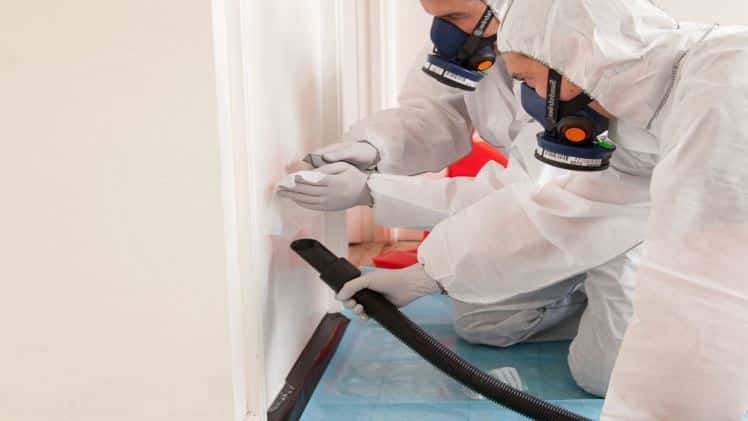Detecting Danger: Understanding the Process of Asbestos Testing

The mere mention of the word “asbestos” conjures up fears of a silent, invisible danger lurking in the homes and workplaces of many. Despite widespread knowledge of its dangers, asbestos remains a common concern, especially in older buildings. For anyone buying, selling, or renovating a property, the question inevitably arises: “Is there asbestos present, and how can we find out?”
Understanding the process of asbestos testing is a critical step in safeguarding health and ensuring compliance with safety regulations. This comprehensive guide will take you through the ins and outs of asbestos identification, from the health risks to the testing methodologies.
The Health Risks of Asbestos Exposure
Before we discuss how asbestos testing is conducted, it is important to underscore why detection is crucial. Asbestos is a group of naturally occurring minerals made up of long, thin fibrous crystals. Its heat resistance and strength have led to its widespread use in numerous applications, from fireproofing materials to insulation and roofing. However, it is the very nature of these fibers that make them so dangerous.
When materials containing asbestos are disturbed, they can release tiny microscopic fibers into the air. These fibers are easily inhaled and can become lodged in the respiratory system. Over time, this can lead to serious health conditions, including:
Mesothelioma, a rare and aggressive cancer that affects the lining of the lungs, abdomen, or heart
Asbestosis, a chronic lung disease characterized by scarring of lung tissue
Lung cancers
The latency period between exposure and diagnosis for these conditions can be decades. Consequently, swift and thorough testing is imperative.
When to Consider Asbestos Testing
You should consider asbestos testing in several situations:
Purchasing a New Home: Older homes, generally those built before 1980, are more likely to contain asbestos-containing materials (ACMs).
Renovations or Demolitions: Disrupting materials such as older insulation, ceiling tiles, or vinyl floors could release asbestos fibers.
The Presence of Damaged Building Materials: If you notice damaged or deteriorating materials you suspect could contain asbestos, testing is the next step.
How Asbestos Testing Works
The process of asbestos testing is not just about finding out if asbestos is present but also about determining the type of asbestos and the condition of the material. There are several main methods for testing, each with its own advantages and applications.
Visual Inspection
The first step in asbestos testing is often a visual inspection. This usually consists of a survey of the property looking for potential sources of asbestos, typically those older materials known to contain it.
Bulk Sampling and Analysis
For a definitive answer, a physical sample of the suspected material is taken. This is called bulk sampling. A trained professional will take a small piece of the suspect material and seal it in a container to prevent fiber release.
This sample is then analyzed in a laboratory using polarized light microscopy (PLM) or transmission electron microscopy (TEM) to identify the presence of asbestos fibers and the type of asbestos present.
Air Testing
When there is a concern that asbestos has been disturbed and fibers may be in the air, air testing is conducted. This is often used during and after asbestos abatement activities. Air is sampled using specialized pumps that draw in air and trap any fibers present onto a filter, which is then analyzed under a microscope.
The Importance of Accredited Testing Labs
Accurate results are contingent upon the proficiency of the testing lab. Accredited labs follow strict protocols to ensure precision and reliability. Certification from bodies like the National Institute for Occupational Safety and Health (NIOSH) or the American Industrial Hygiene Association (AIHA) is a solid indication of a lab’s credibility.
Understanding the Results
When the testing is complete, you will receive a report detailing the findings. This report is typically provided to you in a straightforward manner, including:
The type of asbestos found
The condition of the material
Recommendations for how to proceed
It’s important to understand that the mere presence of asbestos does not necessarily pose a health risk. The material must be friable – able to be crumbled by hand pressure – for fibers to be easily released into the air.
Dealing with Positive Test Results
If the results are positive for asbestos, there is no cause for panic. Numerous steps are available depending on the situation.
Leave it Undisturbed
If the material is intact and undisturbed, the best course of action may be to simply leave it alone. Typically, asbestos is not harmful if it is in good condition and not releasing fibers.
Encapsulation or Covers
Another approach is to encapsulate or cover the material to prevent fiber release. This involves applying a material that will seal the asbestos and prevent it from crumbling.
Professional Removal
In the case of damaged or deteriorating materials, professional asbestos abatement may be necessary.
DIY vs Professional Testing
While DIY testing kits can provide some insight, professional testing is the gold standard. DIY kits can be useful for an initial assessment, but the results may not be as accurate due to user error and the lack of sophisticated equipment.
Professional testing is highly recommended when there is a legitimate concern about asbestos. Trained professionals know what to look for, where to look, and whether it’s necessary to take samples for testing.
The Legal and Ethical Implications of Testing
It’s important to be cognizant of the legal requirements and ethical considerations related to asbestos testing. There are local, state, and federal regulations governing the handling and disposal of asbestos-containing materials, particularly if they are found in public or commercial buildings.
Ethically, it’s essential to protect the health and safety of all who may be affected by the test results, including occupants and workers. Conveying and interpreting the results responsibly is integral to maintaining trust and ensuring appropriate actions are taken.
Future-Proofing Against Asbestos
The best way to deal with asbestos is to prevent it from being a problem in the first place. If you are purchasing a new home, ask for a full asbestos inspection. Regular checks of older buildings can also help identify and address any asbestos-related concerns before they become more significant issues.
Conclusion
Understanding and undertaking the process of asbestos testing is both a responsibility and an opportunity. It offers the chance to protect against a dangerous threat, to ensure compliance with the law, and to make informed decisions that safeguard health and well-being. Whether you’re a homeowner, property manager, contractor, or simply a concerned citizen, knowing the steps involved in asbestos testing empowers you to take the necessary actions when required. Remember that knowledge leads to prevention, which is the ultimate goal in managing the risk posed by asbestos.




